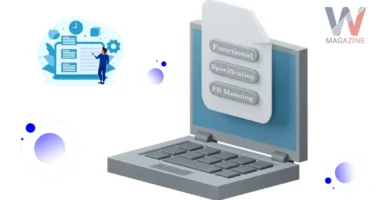Table of Contents
- What Is a Single Point of Failure?
- Why Should You Care About SPOFs?
- 1. Operational Disruptions and Downtime
- 2. Financial Implications
- 3. Data Loss and Security Risks
- 4. Reputational Damage
- 5. Compliance and Legal Challenges
- 6. Project Delays and Increased Costs
- 7. Customer Frustration and Loss
- 8. Increased Vulnerability to Attacks
- 9. Complex Recovery Processes
- 10. Impact on Employee Morale
- Real-World Examples of SPOFs
- Common Areas Where SPOFs Occur
- Strategies to Prevent SPOFs
- The Role of Technology in Mitigating SPOFs
- 1. Redundancy and Failover Mechanisms
- 2. Advanced Monitoring and Predictive Analytics
- 3. Automation and Orchestration
- 4. Load Balancing
- 5. Geographic Diversity and Data Centers
- 6. Regular System Audits and Risk Assessments
- 7. Disaster Recovery Planning and Testing
- 8. Implementing Microservices Architecture
- 9. Active Redundancy in Critical Systems
- 10. High-Redundancy Actuation in Mechanical Systems
- Conclusion
In today’s interconnected world, we rely on various systems to function seamlessly. From the electricity that powers our homes to the apps we use daily, these systems are composed of multiple components working together. But what happens when one critical component fails? This is where the concept of a Single Point of Failure, or SPOF, becomes crucial.
What Is a Single Point of Failure?
A Single Point of Failure (SPOF) refers to a part of a system that, if it fails, will stop the entire system from working. Imagine a chain: if one link breaks, the whole chain becomes useless. Similarly, in any system, be it technological, organizational, or mechanical, a SPOF is that one vulnerable spot that can bring everything to a halt.
For example, consider a website hosted on a single server. If that server crashes, the website becomes inaccessible. There’s no backup, no alternative route, just a complete stop. This lack of redundancy makes the server a SPOF.
Why Should You Care About SPOFs?
In our increasingly digital and interconnected world, the smooth operation of systems, be it in businesses, healthcare, or daily life, relies on the seamless functioning of multiple components. However, when a single component’s failure can halt an entire system, it becomes a critical vulnerability known as a Single Point of Failure (SPOF). Understanding and addressing SPOFs is essential for ensuring system reliability, security, and efficiency.
1. Operational Disruptions and Downtime
A SPOF can lead to significant operational disruptions. For instance, if a business relies on a single server for its website and that server fails, the website becomes inaccessible, leading to potential revenue loss and customer dissatisfaction.
2. Financial Implications
Downtime resulting from an SPOF can have substantial financial consequences. Beyond immediate revenue loss, businesses may incur costs related to system repairs, data recovery, and potential penalties for failing to meet service level agreements.
3. Data Loss and Security Risks
SPOFs can jeopardize data integrity and security. If critical data is stored on a single device without proper backups, its failure can result in irreversible data loss. Moreover, cybercriminals often target SPOFs to gain unauthorized access to systems.
4. Reputational Damage
Frequent system failures due to SPOFs can erode customer trust and damage a company’s reputation. In today’s competitive market, reliability is a key differentiator, and repeated outages can lead customers to seek more dependable alternatives.
5. Compliance and Legal Challenges
For organizations subject to regulatory requirements, SPOF-induced failures can lead to non-compliance issues, resulting in legal penalties and mandated corrective actions. Ensuring system resilience is not just a best practice but often a legal necessity.
6. Project Delays and Increased Costs
In project management, SPOFs can cause delays and escalate costs. If a critical component or individual is unavailable, it can halt progress, necessitating additional resources to address the issue and get the project back on track.
7. Customer Frustration and Loss
Customers expect uninterrupted service. SPOFs that lead to service disruptions can frustrate users, leading to complaints, negative reviews, and ultimately, loss of business. Maintaining high availability is crucial for customer retention.
8. Increased Vulnerability to Attacks
SPOFs can be exploited by attackers as entry points into a system. Once compromised, these points can provide access to broader system components, leading to widespread damage and data breaches.
9. Complex Recovery Processes
Recovering from a SPOF failure can be time-consuming and complex. It often requires not only fixing the failed component but also ensuring that the entire system is secure and operational, which can strain resources and prolong downtime.
10. Impact on Employee Morale
Dependence on a single individual for critical tasks can create stress and burnout. If that person is unavailable, it can lead to operational bottlenecks, increasing pressure on other team members, and affecting overall morale.
Real-World Examples of SPOFs
Let’s discuss some real-world scenarios where SPOFs have had significant impacts:
1. Healthcare System Disruption
In early 2024, a cyberattack targeted UnitedHealth Group’s Change Healthcare unit, a key player in healthcare payment systems. This attack caused widespread disruptions, halting millions of dollars in payments and affecting medical practices across the U.S. The incident highlighted how reliance on a single supplier can pose significant risks to the entire sector.
2. Global IT Outage
A faulty software update from CrowdStrike led to a global IT outage, affecting 8.5 million Microsoft Windows devices. The repercussions were vast: grounded flights, postponed hospital appointments, and interrupted news broadcasts. This incident underscored the vulnerabilities in our digital infrastructure and the dangers of depending heavily on a single software provider.
3. Silver Bridge Collapse
In 1967, the Silver Bridge in West Virginia collapsed due to the failure of a single eyebar in its suspension chain. The tragedy resulted in 46 deaths and emphasized the catastrophic consequences of a SPOF in infrastructure. The collapse led to changes in bridge inspection and design practices across the U.S.
Common Areas Where SPOFs Occur
In today’s interconnected digital landscape, the failure of a single component can lead to significant disruptions. Understanding where Single Points of Failure (SPOFs) commonly occur is crucial for building resilient systems. Let’s explore these areas:
1. Hardware Components
Hardware forms the backbone of IT infrastructure. Components like servers, routers, and switches are critical for operations. If a single server hosts all applications and data, its failure can halt business processes. Similarly, a lone router or switch managing network traffic can become a SPOF, leading to network outages. Implementing redundant hardware and failover mechanisms can mitigate these risks.
2. Power Supply Systems
Reliable power is essential for IT systems. Dependence on a single power source without backups like Uninterruptible Power Supplies (UPS) or generators can be a SPOF. Power outages can cause data loss and hardware damage. Employing redundant power solutions ensures continuous operations during power failures.
3. Network Infrastructure
Network components such as load balancers, firewalls, and DNS servers are vital for connectivity. A single load balancer distributing traffic to servers can be an SPOF; its failure may render services inaccessible. Similarly, reliance on one DNS server can disrupt domain name resolution. Implementing multiple, geographically dispersed network components enhances resilience.
4. Software Applications
Software systems, including operating systems and applications, can harbor SPOFs. A critical application without redundancy can cause operational halts if it crashes. Custom APIs connecting different software solutions may fail if not updated alongside software changes. Regular testing and updates, along with redundant application instances, can prevent such failures.
5. Data Storage and Databases
Centralized data storage without backups is a significant SPOF. If the primary database fails, access to critical information is lost. Implementing data replication, regular backups, and distributed databases ensures data availability even during failures.
6. Human Factors
Employees with exclusive knowledge or access to systems can be SPOFs. Their absence due to illness or departure can disrupt operations. Moreover, human errors, such as misconfigurations or falling for phishing attacks, can compromise systems. Cross-training staff, documenting processes, and enforcing cybersecurity practices can mitigate these risks.
7. Third-Party Vendors and Services
Dependence on a single vendor for critical services, like cloud hosting or payment processing, introduces SPOFs. If the vendor experiences issues, your services may be affected. Diversifying vendors and having contingency plans can reduce this dependency.
8. Supply Chain Dependencies
Relying on a sole supplier for essential components can be a SPOF. Disruptions in their operations can halt your production. Establishing relationships with multiple suppliers and maintaining inventory buffers can alleviate this risk.
Strategies to Prevent SPOFs
Addressing SPOFs involves implementing measures to ensure that no single component’s failure can disrupt the entire system. Here are some effective strategies:
1. Implement Redundancy
Redundancy means having backup components that can take over if the primary one fails. This can be applied in various ways:
- Hardware Redundancy: Using multiple servers or network paths.
- Data Redundancy: Regular backups and data replication.
- Power Redundancy: Uninterruptible power supplies (UPS) and backup generators.
By ensuring that there’s always an alternative, systems can continue operating smoothly even if one part fails.
2. Use Load Balancing
Load balancers distribute workloads across multiple servers or resources, preventing any single component from becoming overwhelmed. If one server goes down, the load balancer redirects traffic to others, maintaining service availability.
3. Geographic Distribution
Hosting services in multiple geographic locations ensures that a regional issue, like a natural disaster, doesn’t bring down the entire system. Cloud providers often offer multi-region deployments to enhance resilience.
4. Regular Maintenance and Testing
Regularly inspecting and testing systems helps identify potential SPOFs before they cause problems. This includes:
- Routine Checks: Ensuring all components function correctly.
- Disaster Recovery Drills: Simulating failures to test response plans.
- Updating Systems: Keeping software and hardware up to date to prevent vulnerabilities.
Proactive maintenance reduces the risk of unexpected failures.
5. Cross-Training Employees
In organizations, relying on a single person for critical tasks is risky. Cross-training ensures that multiple team members can handle essential functions, reducing dependency on any one individual.
6. Implement Failover Mechanisms
Failover systems automatically switch to a standby component when the primary one fails. For instance, if a primary server crashes, the system redirects operations to a backup server, ensuring continuous service.
7. Monitor Systems Continuously
Continuous monitoring helps detect anomalies early. Tools can alert administrators to potential issues, allowing for swift intervention before a minor problem escalates into a major failure.
The Role of Technology in Mitigating SPOFs
In our interconnected digital landscape, the failure of a single component can disrupt entire systems. Single Points of Failure (SPOFs) pose significant risks to businesses and services. Fortunately, technological advancements offer robust solutions to identify, prevent, and mitigate these vulnerabilities.
1. Redundancy and Failover Mechanisms
Redundancy is the cornerstone of SPOF mitigation. By duplicating critical components, such as servers, power supplies, and network devices, systems can continue operating even if one component fails. Failover mechanisms automatically switch operations to backup components, ensuring minimal disruption. For instance, high-availability clusters detect faults and restart applications on alternate systems without manual intervention.
2. Advanced Monitoring and Predictive Analytics
Continuous monitoring tools track system performance, detecting anomalies that may indicate impending failures. Predictive analytics leverages historical data and machine learning to forecast potential issues, allowing proactive maintenance. This approach shifts organizations from reactive to preventive strategies, reducing downtime.
3. Automation and Orchestration
Automation streamlines responses to system anomalies. Automated scripts can handle failovers, provisioning, and recovery tasks, minimizing human error and response time. Orchestration tools coordinate these automated tasks across complex systems, ensuring cohesive and efficient operations.
4. Load Balancing
Load balancers distribute network or application traffic across multiple servers, preventing any single server from becoming a bottleneck. In case of server failure, load balancers redirect traffic to healthy servers, maintaining service availability.
5. Geographic Diversity and Data Centers
Deploying data centers in diverse geographic locations protects against regional disruptions. If one center experiences issues, others can take over, ensuring continuity. This strategy is vital for disaster recovery and maintaining uptime during localized failures.
6. Regular System Audits and Risk Assessments
Regular audits identify potential SPOFs by evaluating system components and configurations. Risk assessments help prioritize mitigation efforts, ensuring that critical vulnerabilities are addressed promptly.
7. Disaster Recovery Planning and Testing
Comprehensive disaster recovery plans outline procedures for restoring systems after failures. Regular testing of these plans ensures preparedness and identifies areas for improvement, reducing recovery time and data loss.
8. Implementing Microservices Architecture
Transitioning from monolithic applications to microservices enhances system resilience. Microservices operate independently; if one fails, others continue functioning, reducing the impact of individual component failures.
9. Active Redundancy in Critical Systems
Active redundancy involves running multiple components simultaneously, so if one fails, others maintain operations without interruption. This approach is common in critical systems like aviation and space missions, where continuous operation is essential.
10. High-Redundancy Actuation in Mechanical Systems
In mechanical systems, high-redundancy actuation uses numerous small actuators instead of a few large ones. This design ensures that the failure of individual actuators doesn’t compromise the entire system, allowing for graceful degradation and continued operation
Conclusion
Single Points of Failure pose significant risks across various domains, from technology and infrastructure to business processes and human resources. By understanding what SPOFs are and implementing strategies to mitigate them, organizations and individuals can build more resilient systems.
Proactive measures, like redundancy, regular maintenance, and leveraging technological advancements, ensure that systems can withstand failures without catastrophic consequences. In an increasingly interconnected world, addressing SPOFs isn’t just a technical necessity; it’s a fundamental aspect of risk management and operational excellence.









